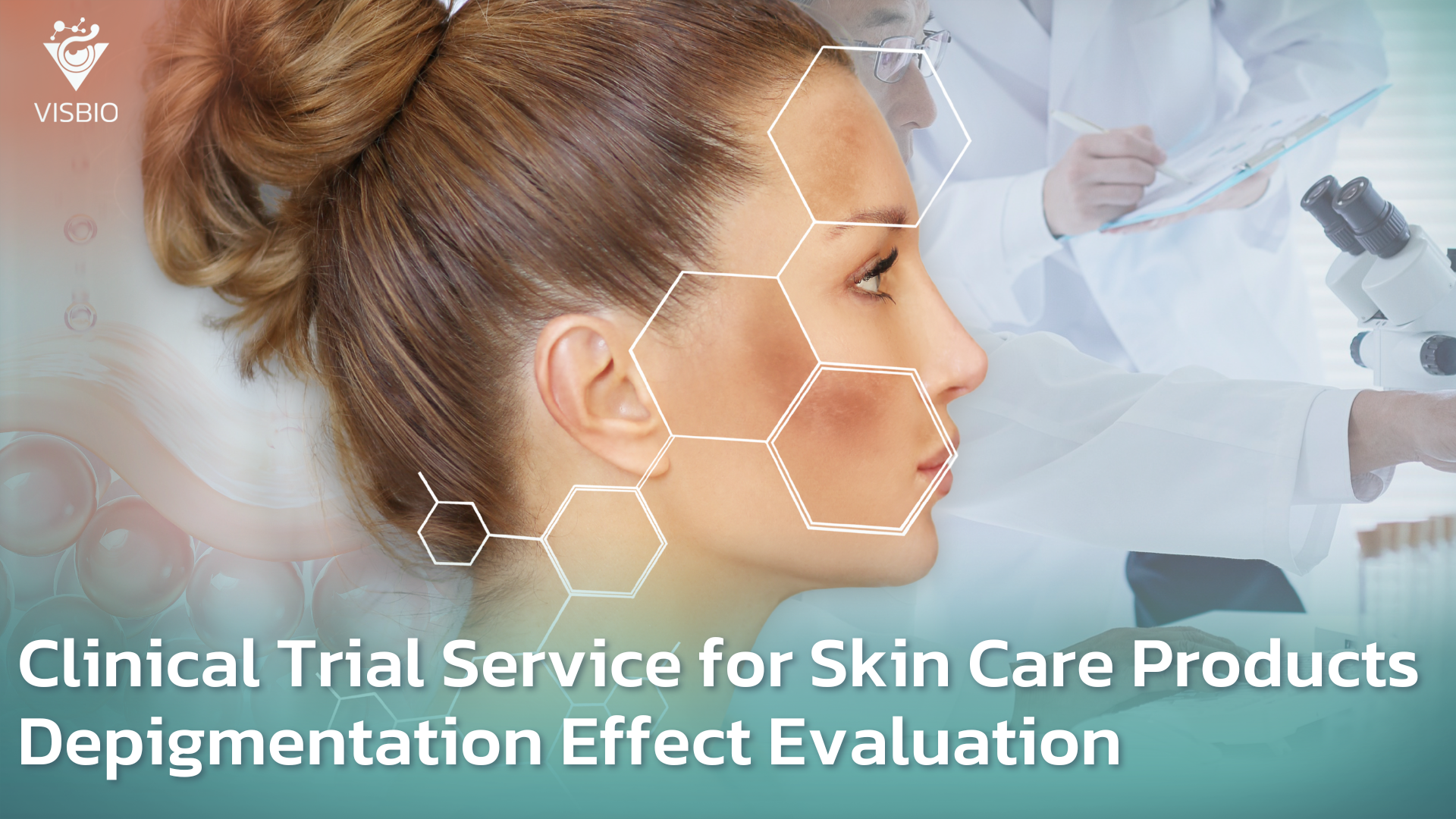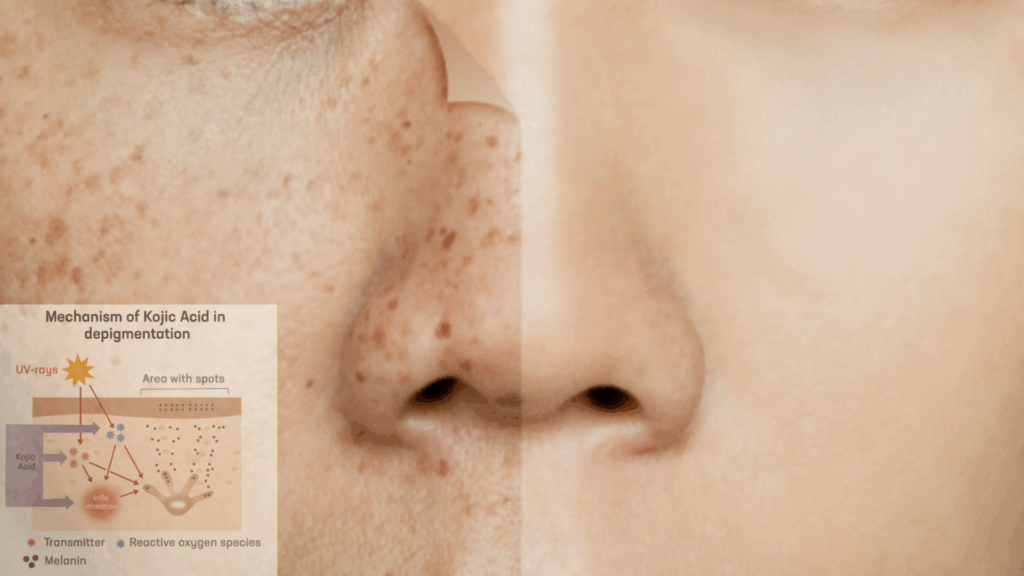
Information on Clinical Trial Service for Skin Care Products: Depigmentation Effect Evaluation
Hyperpigmentation is a prevalent dermatological issue characterized by darkened patches or spots on the skin, often affecting self-confidence and overall skin appearance. This condition arises primarily due to excessive melanin production by melanocyte cells, found within the epidermal layer of the skin. Melanin serves as the skin’s natural defense against harmful ultraviolet (UV) radiation and external environmental aggressors. However, under persistent stimulation from factors such as UV exposure, hormonal fluctuations, inflammatory responses, pollution, stress, aging, and certain medications, melanocytes may overproduce melanin, leading to uneven pigmentation, age spots, melasma, and freckles.
Mechanisms Behind Hyperpigmentation
At the biochemical level, hyperpigmentation is mainly governed by the enzyme tyrosinase. Tyrosinase catalyzes the conversion of the amino acid tyrosine into dihydroxyphenylalanine (DOPA) and subsequently into DOPAquinone. This process ultimately results in the production of melanin. There are two primary types of melanin:
- Eumelanin: Dark pigment that provides brown-to-black coloration.
- Pheomelanin: Reddish-yellow pigment contributing to lighter coloration.
An imbalance or excessive production of these pigments leads to visible hyperpigmentation. Additionally, genetic predispositions, hormonal fluctuations during pregnancy (melasma), prolonged inflammation (post-inflammatory hyperpigmentation, PIH), and certain medications like oral contraceptives can also exacerbate the condition.
Depigmentation Products and Their Mechanisms of Action
Depigmentation or whitening skincare products typically address melanin overproduction through several key mechanisms:
1. Tyrosinase Inhibition
Active ingredients in whitening formulations directly or indirectly inhibit tyrosinase activity:
- Kojic Acid: Chelates copper ions essential for tyrosinase enzymatic function.
- Arbutin: A natural derivative of hydroquinone, directly inhibiting tyrosinase activity, preventing excessive melanin formation.
- Vitamin C (Ascorbic Acid): Reduces melanin synthesis by interfering with tyrosine oxidation.
2. Antioxidant Activity
Oxidative stress and free radicals contribute significantly to hyperpigmentation by triggering inflammatory pathways. Antioxidants effectively neutralize these free radicals and decrease inflammation-related melanin production. Commonly used antioxidants include:
- Vitamin E (Tocopherol): Protects cellular structures from oxidative stress.
- Green Tea Extract (Epigallocatechin gallate, EGCG): Potent antioxidant with anti-inflammatory effects.
- Resveratrol: Naturally found in grapes; protects against UV-induced oxidative damage.
3. Exfoliation
Exfoliating agents such as Alpha Hydroxy Acids (AHAs, e.g., glycolic acid and lactic acid) and Beta Hydroxy Acids (BHAs, e.g., salicylic acid) facilitate removal of melanin-rich dead skin cells, promoting regeneration of clearer, more evenly pigmented skin.
Prevention Strategies Through Depigmentation Products
Effective prevention of hyperpigmentation involves comprehensive skincare formulations incorporating broad-spectrum UV protection agents (UV filters), antioxidants (e.g., Vitamins C and E), and compounds inhibiting melanin synthesis pathways. These measures prevent pigmentation triggered by sun exposure, oxidative stress, and environmental damage.
Clinical Testing Parameters for Depigmentation Products
To scientifically validate the effectiveness of depigmentation products, rigorous clinical testing is essential. These tests typically cover:
- Quantitative Evaluation with Spectrophotometry Spectrophotometric analysis provides objective measurement of melanin and hemoglobin indices, offering precise, quantitative assessment of pigmentation levels before and after product usage.
- Subjective Evaluation via Questionnaires Standardized subjective questionnaires assess user-perceived product effectiveness, skin comfort, irritation potential, overall satisfaction, and perceived improvement in skin clarity and tone.
Benefits of Our Clinical Trial Service
Our clinical trial service delivers scientifically credible data supporting product efficacy claims, providing brands with clear competitive advantages:
- Validated Scientific Evidence: Reliable data obtained from rigorous clinical trials.
- Consumer Confidence: Demonstrable efficacy enhances consumer trust and brand reliability.
- Regulatory Compliance: Clinical data that meets global standards to facilitate product registration and marketing approvals.
Literature:
- Brenner, M., & Hearing, V. J. (2008). The Protective Role of Melanin Against UV Damage in Human Skin. Photochemistry and Photobiology, 84(3), 539-549.
- Smit, N., Vicanova, J., & Pavel, S. (2009). The hunt for natural skin whitening agents. International Journal of Molecular Sciences, 10(12), 5326-5349.
- Matias, A. R., Ferreira, M., Costa, P., & Neto, P. (2015). *Skin colour, skin redness and melanin biometric measurements: comparison study between Antera® 3D, Mexameter® and Colorimeter®. Skin Research and Technology, 21(3), 346-362.
- Pillaiyar, T., Manickam, M., & Jung, S. H. (2017). Recent development of signaling pathways inhibitors of melanogenesis. Cellular Signalling, 40, 99-115.


